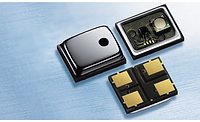Post-Cure Advantages for Silicone Elastomers and Adhesives
Whether using a silicone adhesive in an aerospace assembly or manufacturing silicone bakeware, post-cure for silicone is not a process that belongs in the past.

Using post-cure for silicone rubbers is a process of the past, right? Not necessarily. Original equipment manufacturers (OEMs) may find that post-curing can bring value to certain applications. To determine if post-cure is the best option, it’s important to better understand what is happening during the process, the advantages it offers, and key best practices.
OEMs designing with silicones today often see products marketed as “no post-cure required” solutions. However, that can create the misconception that there is no value in the post-cure process—when in fact there are numerous reasons why an OEM may want to incorporate a post-cure.
Understanding Curing
Catalysts are used to vulcanize silicones. This process creates a network of crosslinks between the polymers, thereby curing the material and building the elastic response for which silicone is known.
Historically, silicone vulcanizing agents (e.g., peroxides) or condensation catalysts (e.g., acetoxy, alkoxy, or oxime) were used with some types of silicone to cure the material. This process leaves residual byproducts that must be evaporated off. Today’s technology includes addition-cured silicone solutions that rely on two-part platinum chemistry, offering an alternative that doesn’t produce significant curing byproducts.
The Post-Cure Difference
In a typical post-cure process, the temperature is controlled to a point between 150-200°C for a period of two to six hours. The time and temperature vary depending on the application.
During the post-cure process for two-part platinum-cured silicones, the elastomer’s reactive chemistry is driven to completion. Any uncrosslinked vinyl remaining in the elastomer reacts with residual hydrides, changing the crosslinking network. The added energy from heat changes the elastomer quickly, which can cause post-cured material to exhibit a range of changes. In addition, regardless of the cure mechanism, articles subject to post-cure may result in some reduction in mass.

Though post-curing can often be misconstrued as a non-value-added process, an OEM may want to incorporate post-cure for a number of reasons.
After the post-cure, the components must be cooled. This can be accomplished by laying them out on trays or hanging them allow air to circulate around them.
Why Choose Post-Cure?
The post-cure process offers numerous advantages for various applications.
Change Material Properties
A post-cure step is often used to change specific material properties, such as:
- Modulus—This is one of the most common reasons to use the post-cure process, particularly for articles that will be sterilized. Heat and gamma sterilization can alter a finished piece’s stiffness, which can impact quality. A post-cure step can create that change ahead of sterilization.
- Compression set—When post-curing drives a chemistry to completion, it can improve resistance to permanent deformation. For example, post-cure can improve sealing performance in gaskets. The same post-cure chemical stability that improves compression set can also allow a product such as a medical balloon to inflate with precise pressures and return to its original shape.
- Shrinkage—The factors that contribute to shrinkage in silicones are complex and are often linked to processing variables. One way to control shrinkage is with a post-cure.
- Chemical stability—Post-cure silicones resist reversion better and can often perform more reliably in challenging environments, like those subject to pressure and steam. This quality is also true of silicone-based adhesives.
- Adhesive performance—Though it can be difficult to predict, both silicone substrates and assemblies bonded using silicone adhesives can be impacted by post-cure. As always, but especially after post-cure, silicone substrates should be cleaned before bonding.
Remove Byproducts and Prevent Outgassing
When a polymer is formulated, the intention is to create a certain molecular weight. Since this is not a precisely controlled process, however, some of the lower molecular weight polymers remain and can create concerns. Similarly, acetoxy curing produces acetic acid, a corrosive substance that can damage electronics (especially in a contained space).
From household goods to sensitive electronics, OEMs have several reasons they may need to eliminate these curing byproducts. For example, impurities may need to be removed to comply with regulations focused on the impact of chemical substances on human health and the environment.
In addition to curing byproducts, many silicones (regardless of cure method) have the potential to contain low-molecular-weight volatile species. Silicone volatiles can evaporate or leech, known as outgassing. Outgassing is a significant concern for aerospace applications. In the harsh space environment, volatiles can evaporate and condense on lenses, sensors, optics, paints, or coatings, causing failures in mission-critical components.
To protect the usability of this equipment in space, as well as the safety of the astronauts who rely on it, the volatile chemicals must be eliminated. Ultra-high-purity silicones can be used in applications where outgassing is a concern. These materials are highly purified to remove low-molecular-weight volatiles.
When ultra-high-purity silicones are used, manufacturers can avoid the additional processing steps required to remove the undesirable volatiles from silicones. Likewise, post-cure can reduce unwanted extractables and leachables from medical device components and from components used in ultra-high-purity systems for the biopharmaceutical industry.
Reduce Molding Cycle Time
Another advantage to post-cure is that it allows parts to be ejected from a mold before they are completely cured but while they are still strong enough for handling. This saves cycle time, which is a primary contributor to the cost, while increasing the machine’s capacity to make more parts per hour.
Post-Cure Challenges
Although the process can provide benefits in some applications, post-cure can be wasteful or even harmful in others. For example, from an application standpoint, post-cure is typically not a good fit for thermally sensitive components (e.g., electronics) in assemblies with multiple materials. Likewise, the process can cause discoloration, which can impact final articles that require a well-defined color or clarity.
Post-cure can impact costs as well. For example, the process increases manufacturing time, which can slow time to market. Even though that time is measured in hours rather than days, the additional time might not outweigh the benefits, especially in fast-turnaround or high-throughput situations.
In addition, the use of ovens—including the space, energy, and labor it takes to operate them—can be an important consideration. For example, unless a manufacturer implements an automated process, it takes time and labor to prepare, lay out, and remove pieces. Ovens need to be cleaned regularly, too, which can add to costs.
The post-cure process involves a safety element as well. During the post-cure process, volatiles can build up in the oven, creating a potential flammability hazard. To mitigate that risk, it is important to follow all best practices for oven loading and fresh air circulation. This also makes it essential to work with an experienced silicone supplier that is able to work through a post-cure setup.
Best Post-Cure Practices
Once post-cure is identified as a feasible process for an application, several factors can help contribute to success.
Account for Post-Curing Early in the Development Process
The process produces changes that can impact manufacturing downstream. A common mistake is to design, develop, and test the part without a post-cure—only to discover the process impacts color once post-cure is incorporated during manufacturing or introduces the potential for adhesion to a silicone substrate after post-cure.
Test, Test, and Test Again
There is no cookie-cutter answer to find the right time and temperature before developing the post-cure process for a specific component. Instead, use experiments that vary time and temperature to find the combination that produces the desired outcome.
Spread the Components Out
The components’ geometry can impact the length of the post-cure, with thin parts typically needing less time than thicker, bulky pieces. Instead of stacking the parts, spread them out so air flows around them.
Plan for Fresh Air
During post-cure, all parts must be exposed to well-circulated, clean, dry air to help prevent a concentrated buildup of volatiles. Use vented or porous racks rather than solid sheets to help circulation.
Clean the Oven Regularly
Over time, contaminants or volatile components crystalize in the oven, creating a safety hazard. Regular cleaning keeps the facility safer and the manufacturing line running.
Log Data
Data loggers that record thermal history can be critical for OEMs because they enable the identification of oven problems and sources of quality issues.
Understand Where Silicone Articles are Sourced
If an application requires post-curing, it’s important to understand whether the quoted price includes post-cure and, if so, what the specific quoted post-cure conditions are. This can help avoid surprises that increase time and costs later in the manufacturing process.
Adding Real Value
Whether using a silicone adhesive in an aerospace assembly or manufacturing silicone bakeware, post-cure for silicone is not a process that belongs in the past. By considering post-cure early in the design stage and working with an experienced silicone manufacturer, you can determine if it has the potential to add real value to your specific manufacturing process or end-use application.
For more information, visit www.avantorsciences.com/pages/en/nusil.
Images courtesy of NuSil.
Looking for a reprint of this article?
From high-res PDFs to custom plaques, order your copy today!





